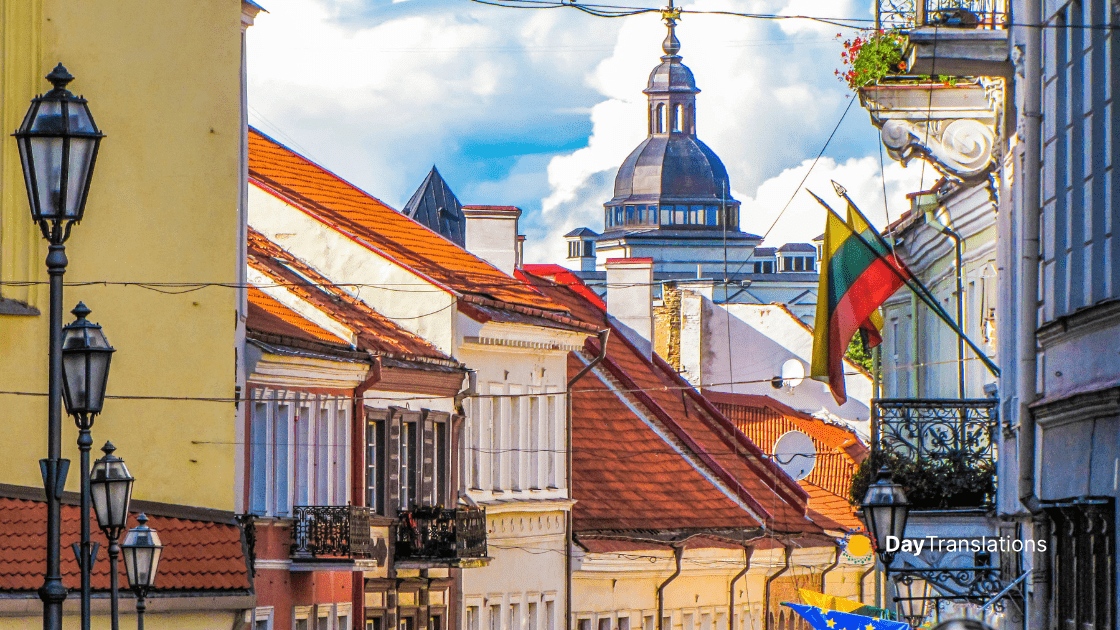Lebanon is located in the Middle East, bordering the Mediterranean Sea, between Israel and Syria. Article 11 of Lebanon’s Constitution states that “Arabic is the official national language. A law determines the cases in which the French language may be used”. The majority of Lebanese people speak Lebanese Arabic, and sometimes French or English. Lebanese people of Armenian or Greek descent often speak Armenian or Greek fluently.
:: Background of Lebanon ::
Following the capture of Syria from the Ottoman Empire by Anglo-French forces in 1918, France received a mandate over this territory and separated out the region of Lebanon in 1920. France granted this area independence in 1943. A lengthy civil war (1975-1990) devastated the country, but Lebanon has since made progress toward rebuilding its political institutions. Under the Ta’if Accord – the blueprint for national reconciliation – the Lebanese established a more equitable political system, particularly by giving Muslims a greater voice in the political process while institutionalizing sectarian divisions in the government.
Since the end of the war, Lebanon has conducted several successful elections. Most militias have been disbanded, and the Lebanese Armed Forces (LAF) have extended authority over about two-thirds of the country. Hizballah, a radical Shia organization listed by the US State Department as a Foreign Terrorist Organization, retains its weapons. During Lebanon’s civil war, the Arab League legitimized in the Ta’if Accord Syria’s troop deployment, numbering about 16,000 based mainly east of Beirut and in the Bekaa Valley. Israel’s withdrawal from southern Lebanon in May 2000 and the passage in October 2004 of UNSCR 1559 – a resolution calling for Syria to withdraw from Lebanon and end its interference in Lebanese affairs – encouraged some Lebanese groups to demand that Syria withdraw its forces as well.
The assassination of former Prime Minister Rafiq HARIRI and 22 others in February 2005 led to massive demonstrations in Beirut against the Syrian presence (“the Cedar Revolution”), and Syria withdrew the remainder of its military forces in April 2005. In May-June 2005, Lebanon held its first legislative elections since the end of the civil war free of foreign interference, handing a majority to the bloc led by Saad HARIRI, the slain prime minister’s son. Lebanon continues to be plagued by violence – Hizballah kidnapped two Israeli soldiers in July 2006 leading to a 34-day conflict with Israel. The LAF in May-September 2007 battled Sunni extremist group Fatah al-Islam in the Nahr al-Barid Palestinian refugee camp; and the country has witnessed a string of politically motivated assassinations since the death of Rafiq HARIRI. Lebanese politicians in November 2007 were unable to agree on a successor to Emile LAHUD when he stepped down as president, creating a political vacuum until the election of Army Commander Michel SULAYMAN in May 2008 and the formation of a new unity government in July 2008.
In this Country Profile
:: Geography of Lebanon ::
Location: Middle East, bordering the Mediterranean Sea, between Israel and Syria.
Geographic coordinates: 33 50 N, 35 50 E
Area:
total: 10,400 sq km
land: 10,230 sq km
water: 170 sq km
Area – comparative: about 0.7 times the size of Connecticut
Land boundaries: total: 454 km, border countries: Israel 79 km, Syria 375 km
Maritime claims: territorial sea: 12 nm
Climate: Mediterranean; mild to cool, wet winters with hot, dry summers; Lebanon mountains experience heavy winter snows
Terrain: narrow coastal plain; El Beqaa (Bekaa Valley) separates Lebanon and Anti-Lebanon Mountains
Elevation extremes: lowest point: Mediterranean Sea 0 m, highest point: Qurnat as Sawda’ 3,088 m
Natural resources: limestone, iron ore, salt, water-surplus state in a water-deficit region, arable land
Land use:
arable land: 16.35%
permanent crops: 13.75%
other: 69.9% (2005)
Natural hazards: dust storms, sandstorms
Environment – current issues: deforestation; soil erosion; desertification; air pollution in Beirut from vehicular traffic and the burning of industrial wastes; pollution of coastal waters from raw sewage and oil spills
Environment – international agreements: party to: Biodiversity, Climate Change, Climate Change-Kyoto Protocol, Desertification, Hazardous Wastes, Law of the Sea, Ozone Layer Protection, Ship Pollution, Wetlands. Signed, but not ratified: Environmental Modification, Marine Life Conservation.
:: People of Lebanon ::
Population: 3,971,941 (July 2008 est.)
Age structure:
0-14 years: 26% (male 526,994/female 505,894)
15-64 years: 66.8% (male 1,275,021/female 1,380,131)
65 years and over: 7.1% (male 128,002/female 155,899) (2008 est.)
Median age:
total: 28.8 years
male: 27.6 years
female: 30 years (2008 est.)
Population growth rate: 1.154% (2008 est.)
Birth rate: 17.61 births/1,000 population (2008 est.)
Death rate: 6.06 deaths/1,000 population (2008 est.)
Net migration rate : NA (2008 est.)
Sex ratio:
at birth: 1.05 male(s)/female
under 15 years: 1.04 male(s)/female
15-64 years: 0.92 male(s)/female
65 years and over: 0.82 male(s)/female
total population: 0.94 male(s)/female (2008 est.)
Infant mortality rate:
total: 22.59 deaths/1,000 live births
male: 25.08 deaths/1,000 live births
female: 19.97 deaths/1,000 live births (2008 est.)
Life expectancy at birth:
total population: 73.41 years
male: 70.91 years
female: 76.04 years (2008 est.)
Total fertility rate: 1.87 children born/woman (2008 est.)
HIV/AIDS – adult prévalence rate: 0.1% (2001 est.)
HIV/AIDS – people living with HIV/AIDS: 2,800 (2003 est.)
HIV/AIDS – deaths: fewer than 200 (2003 est.)
Nationality:. noun: Lebanese (singular and plural) adjective: Lebanese
Ethnic groups: Arab 95%, Armenian 4%, other 1% note: many Christian Lebanese do not identify themselves as Arab but rather as descendents of the ancient Canaanites and prefer to be called Phoenicians
Religions: Muslim 59.7% (Shia, Sunni, Druze, Isma’ilite, Alawite or Nusayri), Christian 39% (Maronite Catholic, Greek Orthodox, Melkite Catholic, Armenian Orthodox, Syrian Catholic, Armenian Catholic, Syrian Orthodox, Roman Catholic, Chaldean, Assyrian, Copt, Protestant), other 1.3% note: 17 religious sects recognized
Languages: Arabic (official), French, English, Armenian.
Literacy:
definition: age 15 and over can read and write
total population: 87.4%
male: 93.1%
female: 82.2% (2003 est.)

Sorry, the comment form is closed at this time.